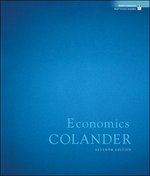Question
PART 1. Billy Zagat runs a restaurant in Philadelphia. On a busy night, he can seat 22 tables per hour, but 31 dinner parties typically
PART 1.
Billy Zagat runs a restaurant in Philadelphia. On a busy night, he can seat 22 tables per hour, but 31 dinner parties typically arrive hourly between 7-10 p.m. Assume these patrons come in randomly, their willingness to pay for a table is uniformly distributed between $80 and $20 below. Currently, he treats patients on a 'first come, first serve' basis, meaning those that call first get an appointment, until the 22 available tables are taken. A graphic is provided just below this problem set.
In case you have forgotten how to calculate a 'demand' schedule, this one is given by P = $82 ? 2 Qd
1.Using the above information and the graphic provided, the loss of economic efficiency by this 'first-come, first-serve' (FCFS) policy is _________ dollars.
2.Zagat's neighbor, Dr. B, has convinced him this first-come, first serve policy is inefficient. Zagat decides to replace it with a $60 non-refundable reservation policy: Patrons can reserve a table for $60; those that do not wish to pay the $60 reservation fee may show up to eat at the restaurant, but they may not get a table (or may be forced to wait).
The number of patrons making reservations under this new policy is ________?
3. The net loss of economic efficiency with this hybrid Price-FCFS policy is ______?
(Hint: You need to take into account that some will actually receive a net benefit from this policy)
4. In terms of economic efficiency, one could improve upon the reservation policy described above. The reservation fee that produces the lowest overall smallest loss in economic efficiency is __________.
--------------------------------------------------------------------------------------------------------------------------
PART 2.
Consider the following market with a single seller (a monopolist).
? Demand: P = 1600 - 3Qd? Marginal Cost: MC = 200 + 4Qs
5. If this seller acted as a perfectively competitive firm and set P = MC, the market-clearing quantity solve would be _________ units (in other words, treat the MC curve is the seller's supply curve and find the market equilibrium quantity).
6. The equilibrium price for the situation described in Question 5 is ________ dollars.
7. Now suppose the seller executes its market power and sets its marginal revenue equal to marginal cost.The marginal revenue curve in this case is MR = 1600 - 6 Qd.The profit maximizing level of output for this monopolist is _________?
8. The price that prevails in the market in the situation described in Question 7 is _____ dollars.
9. Suppose now the monopolist can successfully price discriminate across its customers. Specifically, high-end customers (those with high reservation prices) will be charged a retail price described in Question 8 above. Customers with lower reservation prices shop in a discount outlet.
The profit maximizing number of sales in the discount market is __________.
10. The price in the discount market is _____________ dollars.

Step by Step Solution
There are 3 Steps involved in it
Step: 1

Get Instant Access to Expert-Tailored Solutions
See step-by-step solutions with expert insights and AI powered tools for academic success
Step: 2

Step: 3

Ace Your Homework with AI
Get the answers you need in no time with our AI-driven, step-by-step assistance
Get Started


